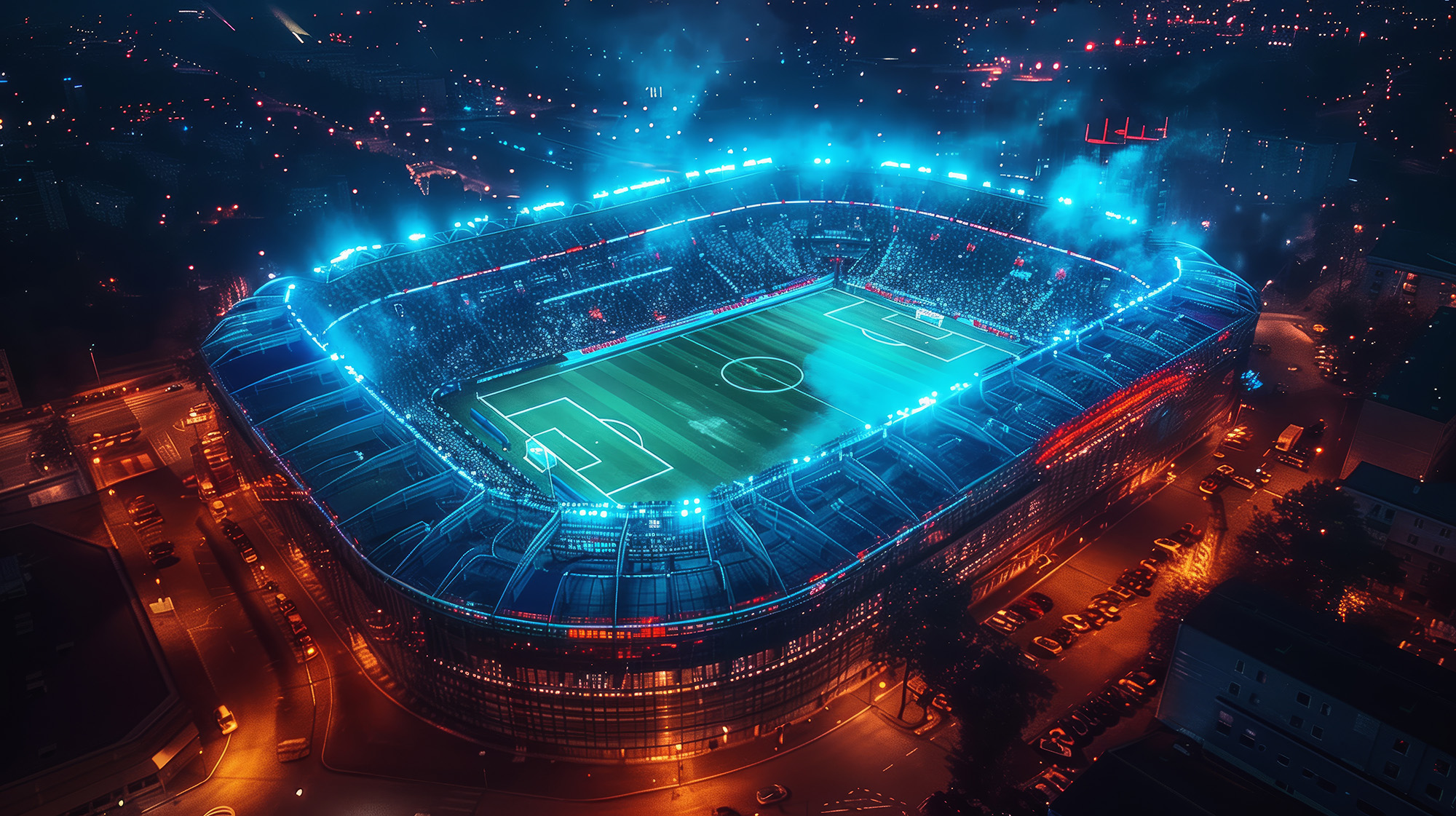The convergence of technology and sports has given rise to a new class of venues: smart stadiums. These digitally-enhanced and connected spaces are designed to revolutionize the fan experience, enhance safety, and optimize operational efficiency.
Ultimate Fan Experiences
Smart stadiums prioritize fan engagement by providing personalized and memorable experiences:
- Space Utilization: Fans are seamlessly guided to less crowded gates or restrooms using real-time data. No more wandering aimlessly during halftime for the shortest restroom or concession line!
- Targeted Concessions: Contactless sales, personalized discounts, and the ability to order from your seat—smart stadiums make concessions convenient and tailored to individual preferences.
- Indoor Wayfinding: Finding your seat, the nearest restroom, or the team store with your favorite merchandise becomes effortless through intuitive navigation systems.
- Traffic and Crowd Management: Real-time data helps manage traffic flow, parking, and crowd movement. Smart parking systems guide fans to available parking spots, reducing congestion.
- In-Event Entertainment: Interactive displays, digital signage, and AR/VR experiences keep fans entertained during breaks in the action.
Intelligent Environmental Health and Safety
Safety and well-being are paramount in smart stadiums:
- Monitoring Crowded Areas: AI cameras and sensors can be used to track crowd sizes and adjust airflow to maintain optimal conditions, especially during packed events (specifically related to CO2 levels).
- Emergency Crowd Flow: In crisis situations, smart stadiums guide fans to safety using automated signage, ensuring efficient evacuations. Emergency response systems can quickly alert authorities to occupied areas in need of immediate attention.
- Enhanced Surveillance: Smart surveillance systems use video analytics to detect unusual behavior or security threats.
Optimal Operational Efficiency
Efficiency is at the core of smart stadiums:
- Automatic Shading: Exterior windows receive dynamic shading and/or tinting to minimize direct sunlight, enhancing comfort and reducing energy consumption.
- Real-Time Fault Detection: Smart systems identify problems instantly, allowing prompt resolution and preventing widespread disruptions.
- Resource Optimization: Smart stadiums optimize resource usage, such as water, electricity, and waste management. Sensors monitor occupancy levels, adjusting lighting and climate control accordingly. Historical data is used to predict loads based on expected occupancy, allowing effective load-shifting.
- Predictive Maintenance: Smart stadiums can monitor equipment and infrastructure in real time and notify when equipment is nearing its end of life. Predictive maintenance helps prevent unexpected failures and ensures smooth operations during events.
- Energy Management: Battery Energy Storage Systems are used to increase resiliency and lessen impact on the local power grid. Combined with on-site solar power, smart stadiums lower their carbon footprint.
Smart stadiums can leverage advanced technology already in place in many core building systems:
- HVAC Components: Climate control ensures comfort for fans.
- Lighting Systems: Energy-efficient lighting enhances the ambiance.
- Energy and Utility Metering: Real-time monitoring optimizes resource usage.
- Plumbing and Fire Safety: Smart systems prevent emergencies.
- Security and Access Control: Enhanced surveillance and secure access.
Beyond the basics, smart stadiums incorporate specialized systems:
- Fault Detection and Diagnostics (FDD): Early detection prevents equipment failures.
- Operational Technology (OT) Network: Seamless integration of various systems.
- Motorized Shades and Dynamic Glass: Adaptive shading for energy efficiency.
- Elevator Control: Efficient vertical transportation.
- Audiovisual and Digital Signage: Engaging fan experiences.
- Internet of Things (IoT) Devices: Sensors for data-driven decisions.
To effectively deliver an intelligent facility that meets the technological advancements that a smart building structure enables for ultimate fan experiences, intelligent environmental health and safety, and optimal operational efficiency, it’s highly recommended to engage a professional that can deliver Smart Building Consulting Services (SBCS). The SBCS will lead the project design team to define, develop, and facilitate the implementation of the prioritized smart building solutions. The SBCS will support the project goal to create a technologically advanced and fan-friendly stadium by coordinating the connected built environment to deliver industry leading attributes of operational efficiency and sustainability.
The operation of a professional sports venue is a large and complex undertaking. The SBCS plays a vital role in delivering an intelligently connected building that collects and reacts to data, provides valuable insights and intuitive controls to its operators, and generates exceptional fan experiences.
Smart stadiums are more than just venues; they’re hubs of innovation, where technology and sports converge to create unforgettable experiences. As we step into this exciting future, smart stadiums promise to redefine how we watch and enjoy our favorite teams and events
More from Author
SSR | Feb 13, 2023
Exploring intelligent lighting usage in healthcare, commercial facilities
SSR's Todd Herrmann, PE, LEEP AP, explains intelligent lighting's potential use cases in healthcare facilities and more.
SSR | Jan 31, 2023
How to solve humidity issues in hospitals and healthcare facilities
Humidity control is one of the top mechanical issues healthcare clients face. SSR's Lee Nordholm, PE, LEED AP, offers tips for handling humidity issues in hospitals and healthcare facilities.
SSR | Sep 14, 2020
Energy efficiency considerations for operating buildings amid a pandemic
During these times building owners and operators should remain focused on verifying their building systems are functioning properly and maintenance routines are kept on schedule.
SSR | Oct 2, 2014
Effective use of building enclosure mock-ups within the commissioning process
Engineers from SSR offer advice and guidelines on implementing building enclosure mockups on any project.










